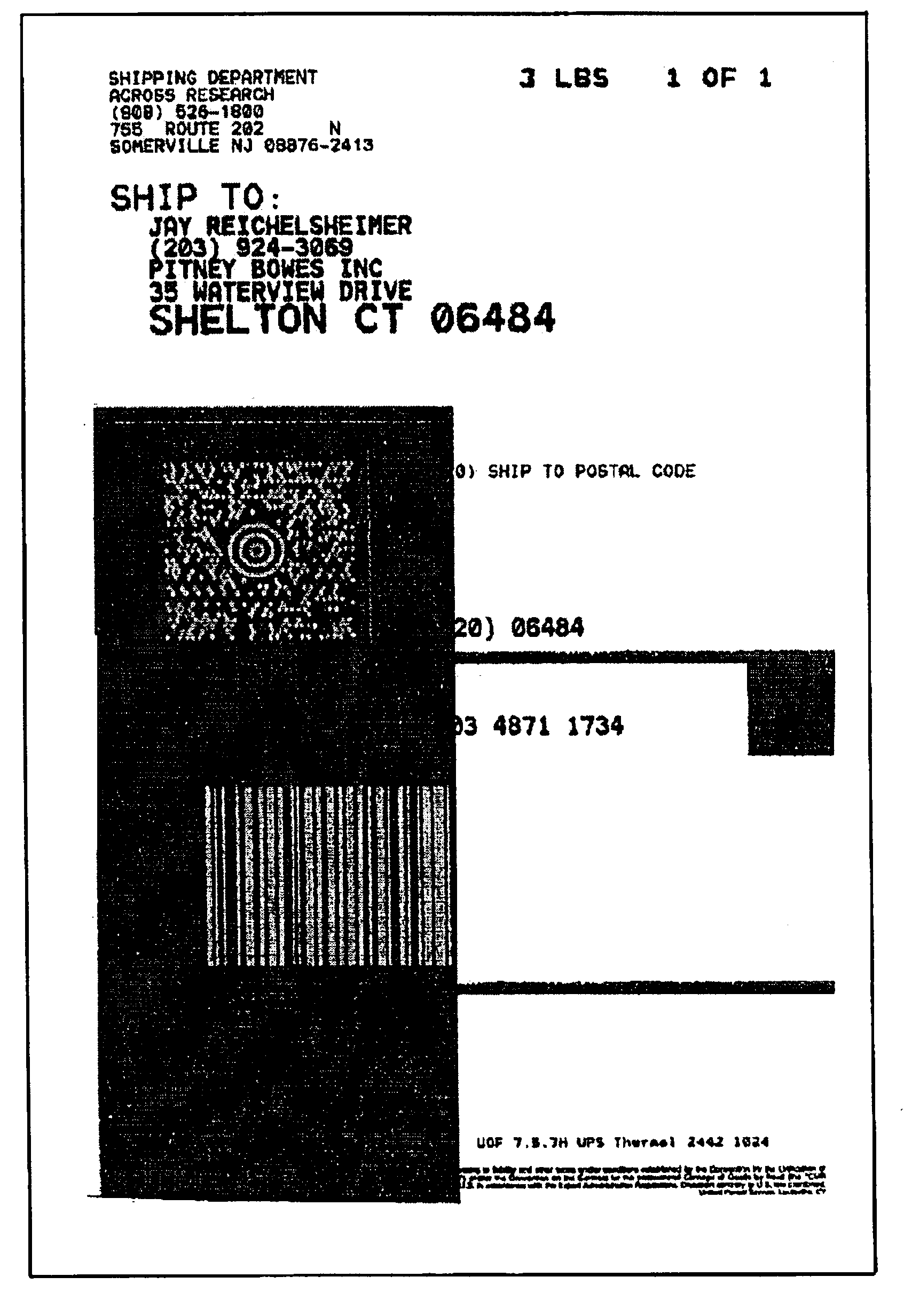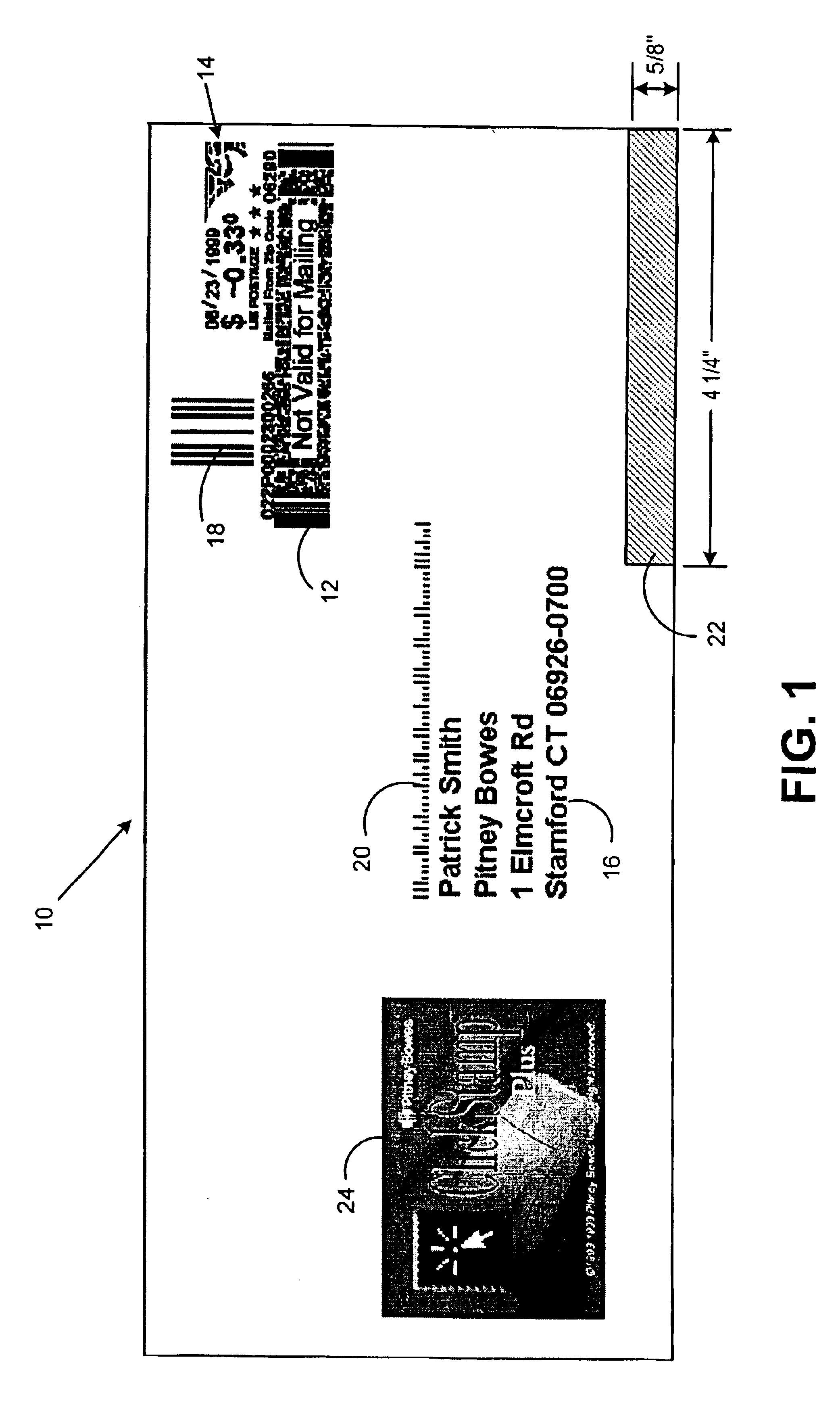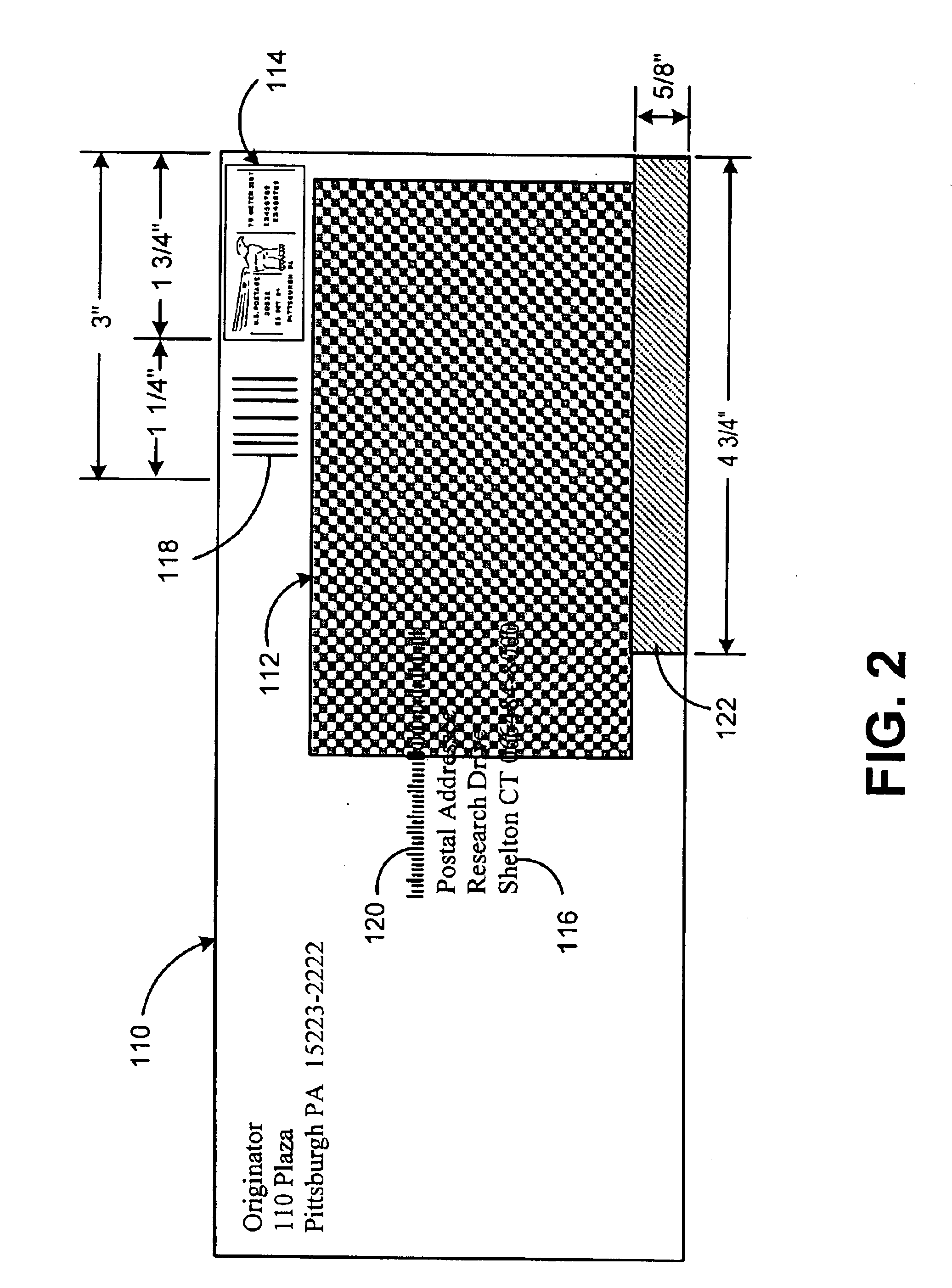Method for printing high information density machine-readable composite images
a composite image and information density technology, applied in the field of printing composite images, can solve the problems of insufficient capability, affecting reducing the reliability of printed information, so as to achieve the effect of enabling provision, reducing the risk of envelope damage, and high complexity
- Summary
- Abstract
- Description
- Claims
- Application Information
AI Technical Summary
Benefits of technology
Problems solved by technology
Method used
Image
Examples
example 1
[0063]This example illustrates an invisible red fluorescent ink formulated by using a water-soluble organic fluorescent pigment from Riedel de Haen and NF1076 Neat. The pigment is very readily soluble in aqueous systems (860 g / L) and dissolves very rapidly. The formulation of the ink is as follows:[0064]1.10% Lumilux Red CD 380[0065]1.98% PVP (Kollidone K-12)[0066]6.28% BTG[0067]9.9% 2-Pyrrolidone[0068]24.64% Polyethylene Glycol (M.W. 200)[0069]56.10% Distilled H20
The ingredients are mixed to achieve homogeneity.
[0070]The ink exhibits the following properties:
Viscosity=4.1 cp
Surface Tension=40.3 dynes / cm
example 2
[0071]This example illustrates formulation of a low-viscosity invisible red fluorescent ink following the procedure of Example 1 from the following components:[0072]1.10% Lumilux Red CD 380[0073]1.60% PVP (Kollidone K-12)[0074]6.00% BTG[0075]6.00% 2-Pyrrolidone[0076]8.00% Polyethylene Glycol (M.W. 200)[0077]77.3% Distilled H20
The ink exhibits the following properties:[0078]Viscosity=2.2 cp[0079]Surface Tension=39.0 dynes / cm
[0080]In an alternate embodiment, the present invention includes the use of composite ink in the address block to provide a more information-rich bar code that would be invisible. Examples of a more information-rich bar code are barcodes that are longer or denser, printing multiple planet codes (such as one for the postal service and one for the mailer). The USPS already reads POSTNET and PLANET™ Code barcodes in the address block. The present invention provides for more information printed on the mailpiece, including in the address block, even for mailers who are...
PUM
 Login to View More
Login to View More Abstract
Description
Claims
Application Information
 Login to View More
Login to View More - R&D
- Intellectual Property
- Life Sciences
- Materials
- Tech Scout
- Unparalleled Data Quality
- Higher Quality Content
- 60% Fewer Hallucinations
Browse by: Latest US Patents, China's latest patents, Technical Efficacy Thesaurus, Application Domain, Technology Topic, Popular Technical Reports.
© 2025 PatSnap. All rights reserved.Legal|Privacy policy|Modern Slavery Act Transparency Statement|Sitemap|About US| Contact US: help@patsnap.com



